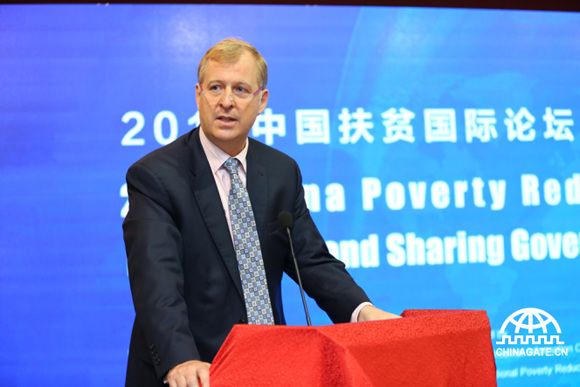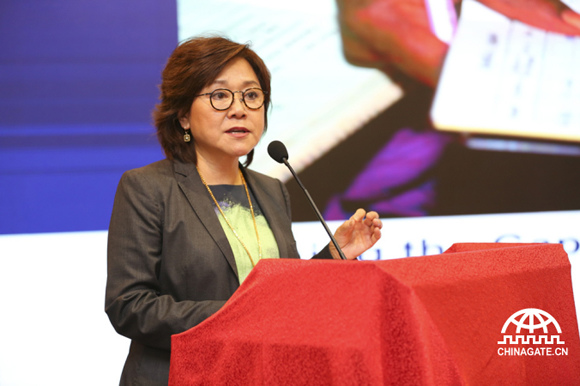
Benedict Bingham, Country Director, PRC Resident Mission, ADB, maintained: “policy making in China has always been conscious of the need to avoid leaving the vulnerable behind. So, there has been a conscious effort to push reforms to expand opportunities, while also calibrating the speed of those reforms to avoid creating win-lose imbalances and complementing those reforms with reforms that brought expanded access to social services and education.”

Hoonae Kim, Director, Asia and the Pacific Division, Program Management Department, International Fund for Agricultural Development (IFAD), proposed investing in rural people through inclusive rural finance. In this regard, IFAD has been strengthening productive capacities for rural poor, paying special attention to women, promoting market participation by smallholder farmers, and building resilience to climate variability and other vulnerabilities for the last 40 years.
In addition, researchers and representatives from the field of business shared ideas for best-practice in poverty reduction. For example, professor Pun Ngai and associate professor Julia Wang from Hong Kong University analyzed issues among the new generation of working poor and proposed intervention models. Zhang Jianping, General Manager of Jiujianpeng Group, illustrated how poverty could be reduced through the honeysuckle flower industry, while Chen Haida, Board Chairman of Ada Technology (Beijing) shared the application of logistics in poverty reduction.
Since the battle against poverty was launched in 2015, China has come up with many innovative and effective practices in targeted poverty alleviation. To eradicate poverty, China focuses on communication and cooperation with other developing countries and international organizations, while receiving from them the latest theories and best practices. By actively implementing the UN 2030 Agenda, China has made an enormous contribution to global poverty reduction.
(Source:p.china.org.cn)


















































